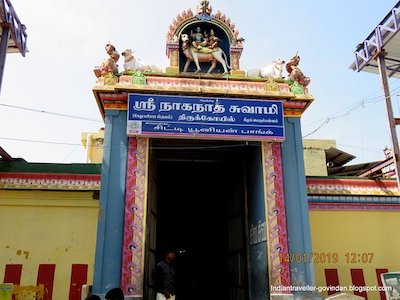Navagraha Temple Tour
Embark on a sacred journey to the nine Navagraha temples located in Tamil Nadu, each representing one of the celestial bodies from Hindu astrology. These temples are significant in seeking divine blessings for planetary peace and prosperity.
Navagraha Temples
The Navagraha Temples, located in and around the Kumbakonam region of Tamil Nadu, represent the nine celestial bodies (grahas) in Hindu astrology. Pilgrims visit these temples to seek blessings to mitigate the negative effects of planetary influences and enhance their well-being, fortune, and health. Let’s take a journey through each temple and explore its significance.
1. Suryanar Temple (Sun)
The Sooriyanar Temple, dedicated to the Sun God, was constructed during the reign of Kulottunga Choladeva (1060-1118 CE). Inscriptions found at the temple refer to it as Kulottungachola-Marttandalaya, and it is believed that the current rock shrine was influenced by the Srivijaya rulers, from the region near present-day Indonesia.
Today, the temple is managed by the Hindu Religious and Charitable Endowments Department of Tamil Nadu, preserving its historical and spiritual importance. Pilgrims visit the temple to seek blessings for health, vitality, and prosperity, believing in the Sun God's divine power.
The temple is also celebrated in Carnatic music, as it was referenced by Muthuswami Dikshitar in his song "Suryamurthe" composed in Saurashtra ragam. Sooriyanar Kovil holds great cultural significance in the Navagraha worship tradition and remains a major pilgrimage site in Tamil Nadu for devotees of the celestial deities.
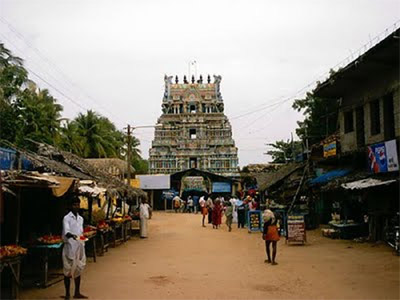
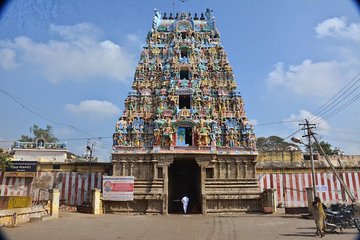
2. Chandran Temple (Moon)
The Chandra Navagraha Temple in Thingalur, dedicated to the Moon God, is known for its unique rituals. Like other Shiva temples in Tamil Nadu, the priests belong to the Shaivaite Brahmin community and perform six daily rituals. These include Ushathkalam at 5:30 a.m., Kalasanthi at 8:00 a.m., Uchikalam at 10:00 a.m., Sayarakshai at 6:00 p.m., Irandamkalam at 8:00 p.m., and Ardha Jamam at 10:00 p.m.
Each pooja involves four steps: abhisheka (sacred bath), alangaram (decoration), neivethanam (food offering), and Deepa aradanai (waving of lights). The rituals are conducted with traditional music from nagaswaram (wind instrument) and thavil (percussion). Devotees offer their prayers amidst the sacred Vedic chants recited by the priests.
This temple is part of the Navagraha circuit, where devotees worship the celestial deities to seek blessings for mental peace, emotional balance, and prosperity in life.
3. Angarakan Temple (Mars)
Devotees take a holy dip in the temple tank before worshiping Vaitheeswaran. A local belief suggests that dissolving jaggery in the water helps cure skin diseases. The tonsure ceremony, where children’s heads are shaved for the first time to promote healthy growth, is a common practice. Another form of worship is Mavilaku ma, and devotees also follow the custom of sticking salt and pepper near the temple pole and tank.
The sacred soil mixed with ash, called Thiruchandu Urundai, is considered medicinal and believed to cure various ailments. Additionally, sandalwood powder mixed with saffron is another remedy offered at the temple. Devotees often buy silver-plated images of body parts and place them in the Hundi as offerings to heal specific afflictions.
The Veeraraghavaswamy Temple at Thiruvallur is regarded as the Vaishnavite counterpart to the healing powers of Vaitheeswaran Temple, which is part of the Saivite tradition.
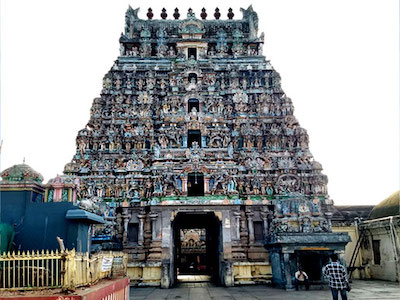
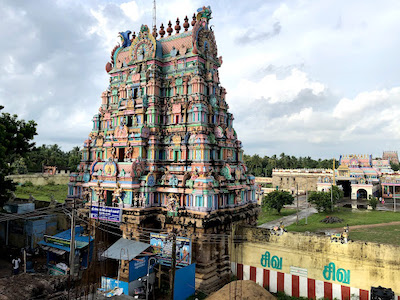
4. Budhan Temple (Mercury)
Thiruvenkadu Temple, located in Mayiladuthurai district, is one of the nine Navagraha temples in Tamil Nadu and part of the popular Navagraha pilgrimage circuit. This temple enshrines Budhan (Mercury), one of the nine planets in Hindu astrology. It is believed that the planets, including Budhan, have a significant impact on a person’s horoscope, which is calculated based on the time of birth. As a result, these planets are said to influence the course of an individual’s life.
According to Hindu beliefs, each planet transitions from one star to another during specific periods, affecting a person’s fortune. The Navagrahas, or nine planets, are thought to bring both positive and negative effects, with the latter being mitigated through prayers and rituals.
Devotees visit this temple to perform prayers and seek blessings to reduce the ill effects of Mercury in their horoscope, aligning their lives with favorable outcomes.
5. Guru Temple (Jupiter)
Guru Navagraha Sthalam, located in Alangudi (Thiruvarur District), is dedicated to the planet Guru (Jupiter) and is part of the renowned Navagraha Temples of Tamil Nadu. This temple is historically significant as it is mentioned in the revered Tamil Saivite work, Tevaram, composed by Tirugnana Sambandar, a seventh-century poet-saint. Sambandar glorified Apathsaheswarar in ten verses, which are part of the First Tirumurai.
Appar, another prominent poet-saint and a contemporary of Sambandar, also composed ten verses in praise of the deity Annamalaiyar, which are included in the Fifth Tirumurai. Due to its mention in the Tevaram, this temple is honored as a Paadal Petra Sthalam, one of the 275 sacred temples of Lord Shiva that are celebrated in the Saiva canon.
Being a highly revered temple, it attracts numerous devotees who come to seek blessings from Guru (Jupiter) and alleviate any astrological hardships associated with this planet.

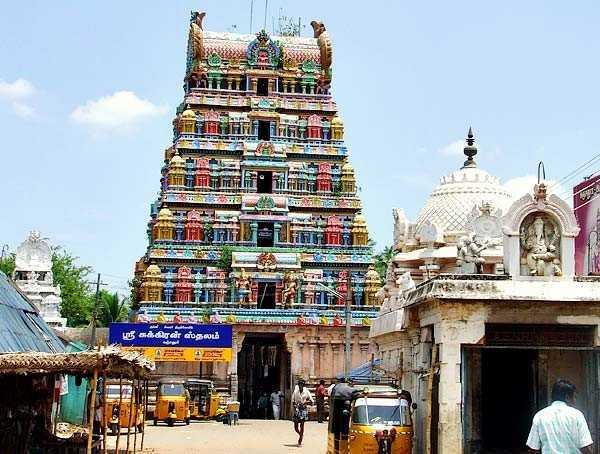
6. Sukran Temple (Venus)
Sukra Navagraha Sthalam, located in Kanjanur (Thanjavur District), is home to the Agniswarar Temple, situated 18 kilometers northeast of Kumbakonam. This temple is dedicated to the deity Sukra (Venus), but interestingly, the primary idol worshipped here is that of Agniswarar, a form of Lord Shiva.
In line with the Saivite belief that Lord Shiva pervades everything, it is believed that Sukra resides within the divine form of Shiva, symbolizing the unity of the two deities. The temple attracts numerous devotees seeking blessings related to Venus, which is associated with love, beauty, and prosperity.
The intricate architecture and serene ambiance of the Agniswarar Temple make it a significant pilgrimage site for those looking to enhance their astrological fortunes and spiritual well-being. Visitors often engage in various rituals and prayers, hoping to invoke the blessings of both Agniswarar and Sukra, thus ensuring harmony and prosperity in their lives.
7. Shani Temple (Saturn)
Shani Navagraha Sthalam, located in Thirunallar (Karaikal), is renowned for the Thyagaraja Temple, celebrated for its unique ajapa thanam, or dance without recitation, performed by the presiding deity. According to local legends, a Chola king named Mucukunta sought assistance from Indra, the king of the gods, to create a statue of Thyagaraja Swamy (a form of Lord Shiva) reclining on the chest of Lord Vishnu.
Indra attempted to trick the king by commissioning six other statues, but Mucukunta ultimately chose the authentic idol located in Tiruvarur. The remaining six idols were placed in various locations, including Thirukkuvalai, Nagapattinam, Tirukarayil, Tirukolili, and Tirumaraikadu.
The temple is a significant pilgrimage site for devotees seeking the blessings of Shani (Saturn), and the vibrant rituals and offerings create a spiritually enriching atmosphere, making it a vital destination for those wishing to alleviate astrological afflictions associated with Shani.
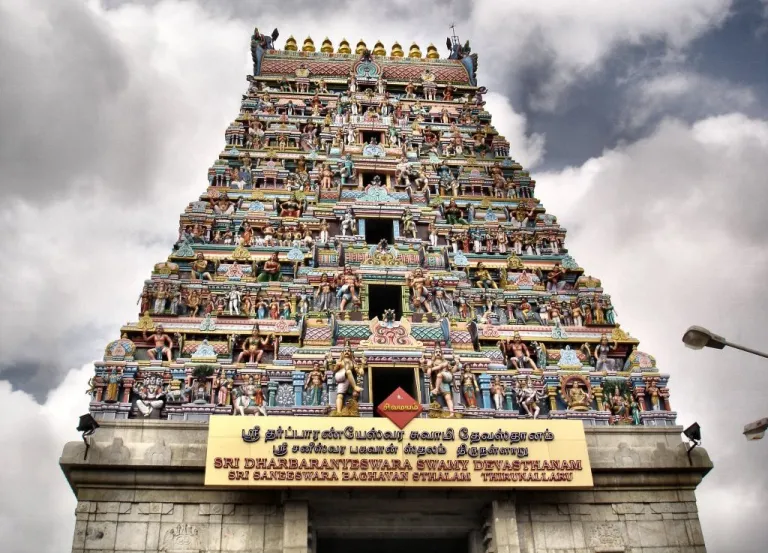
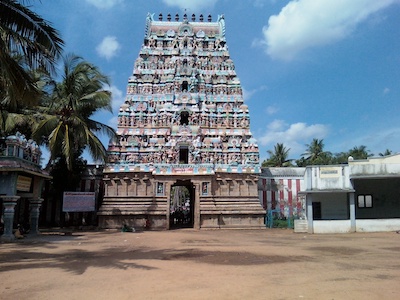
8. Rahu Temple
Rahu Navagraha Sthalam, located in Thirunageswaram (Thanjavur District), is a significant temple dedicated to Rahu, where rituals are performed by priests from the Shaivaite community, a Brahmin sub-group. The temple hosts six daily ceremonies, including Ushathkalam at 6:00 a.m., Kalasanthi at 9:00 a.m., Uchikalam at 1:00 p.m., Sayarakshai at 5:00 p.m., Irandamkalam at 7:00 p.m., and Ardha Jamam at 9:00 p.m.
Special Rahu Abhishekam (sacred bathing) ceremonies take place twice daily at 11:30 a.m. and 5:30 p.m., along with two additional ceremonies at various times throughout the day. Each ritual involves four key stages: abhisheka (holy shower), alangaram (decoration), neivethanam (food offering), and Deepa aradanai (lighting of lamps) dedicated to both Annamalaiyar and Unnamulai Amman.
This temple serves as a vital spiritual hub for devotees seeking relief from the astrological influences of Rahu, fostering a vibrant atmosphere of devotion and faith.
9. Ketu Temple
Ketu Navagraha Sthalam, located in Keezhperumpallam (Mayiladuthurai District), is one of the nine prominent Navagraha temples of Tamil Nadu, forming part of the renowned Navagraha pilgrimage. The temple is situated 2 km from Poompuhar and 93 km from Thanjavur, along the Thanjavur-Poompuhar road. This temple is dedicated to Ketu, one of the planetary deities, and holds significant importance for those seeking remedies for the astrological influences of Ketu.
The temple hosts weekly rituals such as Somavaram (Monday prayers) and Sukravaram (Friday prayers), alongside fortnightly Pradosham ceremonies and monthly celebrations like Amavasai (New Moon day), Pournami (Full Moon day), Kiruthigai, and Chaturthi. Devotees believe that worshiping at this temple helps mitigate the ill effects of Ketu in their astrological charts, bringing spiritual and material benefits. The temple draws numerous visitors, especially during auspicious times, making it an important site for those participating in the Navagraha pilgrimage.
